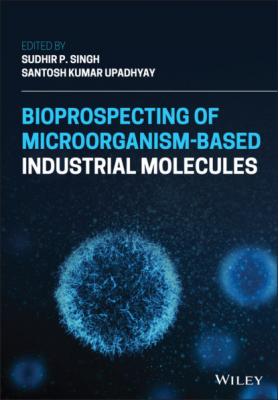Bioprospecting of Microorganism-Based Industrial Molecules. Группа авторов
Читать онлайн.| Название | Bioprospecting of Microorganism-Based Industrial Molecules |
|---|---|
| Автор произведения | Группа авторов |
| Жанр | Биология |
| Серия | |
| Издательство | Биология |
| Год выпуска | 0 |
| isbn | 9781119717263 |
The contribution of the advertising agencies is argued to play a pivotal role in reinforcing and taking the advantages of diversity in developing nations due to caste, race, and age. Antiaging and skin lightening products of multinational companies can be availed from local convenience stores to commercial internet sites. A content analysis of advertisements conducted by Li and group (2008) for skin‐related products in India, Korea, Japan, and Hong Kong depicted that “smooth, young, transparent, fair, wrinkle‐free” is considered as “good skin.” Further, this analysis also indicates that these narratives enhanced finances by using them in advertising the brand of cosmetics.
India, due to its ancient cultural practices in beauty correlated with the strong bond among caste and community biases, seems to outsize the market share in antiaging and skin fairness cream [4]. Due to liberalization in the twentieth century, currently, massive diversity of creams, lotions, scrubs, and of multinational companies for men and women are sold in retail outlets in India. It is estimated that approximately 50% of India's entire cosmetic market is held by the skincare segment. The worth of skincare products in India varies between US $450 and 535 million [7]. Based on the cultural practices and caste system, in India, it is believed that lighter/fairer skin will avail common people higher status in society [7]. Phillips A. [8] has discussed that skin color has a significant impact on the personal and societal life within the Indian social context as it is correlated with moral and behavioral qualities. Moreover, one use of higher skin lightening creams was prominently showcased in the survey study carried out among undergraduate students from 26 countries [9]. According to that survey, approximately 19% of 799 students are reported for the usage of skin lightening products, and the use was associated with depression, low social support, and even risky sexual behaviors. With this context, it is very important to understand the biology of aging and the factors affecting the skin aging so that appropriate products can be purchased having minimum side reactions and health hazards.
4.2 Aging
Aging is a consequence of gradual and cumulative loss in the function of an organism’s life processes with time. Such changes are ipso facto to the progressive deterioration of all the tissues of the body [10]. Aging may also be described as an evolutionary attributed whereby the lifespan (in years) of an individual from a species is predecided [11]. Although an individual starts to age right after birth, the real signs of aging are apparent only after a certain period of age, which is broadly known as “biological maturity” [12]. These signs are accompanied by the reduction of organ efficiency and increased mortality. Aging is believed to be ubiquitous to the living organisms. Nevertheless, in certain species, aging does not imply the criterion of reduced fertility and increased mortality [13]. Physiological, anatomical, and biological changes that an organism undergoes during aging are summarized in (Figure 4.1).
4.2.1 Structure of Skin
Skin is the foremost and most vital organs of the human body spanning about 20 sq. ft. in the area and contributing about 15% of body weight. It serves as an anatomical barrier of the immune system protecting the human body from external threats of infections and toxic compounds [14]. Skin is also associated with a fine network of sensory neurons, ensuring balanced sensitivity and reflexes against hot and cold stimuli. It also plays a pivotal role in thermal homeostasis of the human body [15]. Anatomy of skin comprises three layers, namely, epidermis, dermis, and subcutaneous tissue layer. The epidermis is predominantly clustered with keratin producing keratinocytes while basal dermis layer homes melanin‐producing melanocytes [16, 17]. The dermal–epidermal junction comprises the extracellular matrix, which is secreted by epidermal fibroblasts. The extracellular matrix is composed of complex polysaccharides like chondroitin sulfate and hyaluronic acid and structural proteins such as collagen, elastin, and fibrin [15]. Together, these biomolecules provide strength and elasticity to the skin. Aging of the skin is a result of abrogation in the structure or function of any of the above mentioned histological or biochemical components of the skin.
Figure 4.1 Summary of various characteristics of aging.
It is evident that skin aging is a consequence of a variety of factors encountered by an individual during his lifespan. A broad classification of various aging theories is summarized in Table 4.1.
Table 4.1 Classification of aging theories.
| Classificationtheories | Genetic mutation | Wear and tear | Cellular waste accumulation |
|---|---|---|---|
| Antagonistic pleiotropy | |||
| Waste accumulation | |||
| Free radical | |||
| Insulin resistance | |||
| Advanced Glycosylation | |||
| Telomeres shortening | |||
| The error catastrophe | |||
| Autoimmunity | |||
| Circadian regulation | |||
| Evolution |
4.2.2 Skin Aging Factors
The cosmetically relevant and noticeable changes in aging skin are (i) hyper‐pigmentation or age spots, (ii) wrinkled and saggy skin, (iii) dryness and dull skin tone, (iv) thin and injury‐prone skin [18]. All the above‐mentioned changes in an individual arise due to the interplay of intrinsic and extrinsic factors. Mechanistic insights of various intrinsic and extrinsic factors involved in skin aging are summarized in Figure 4.2. In the present section, we will explore the details of these factors, and we will try to touch their mechanisms.
4.2.3 Intrinsic Skin Aging
